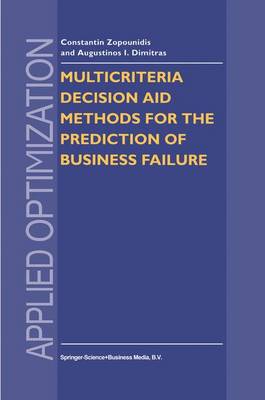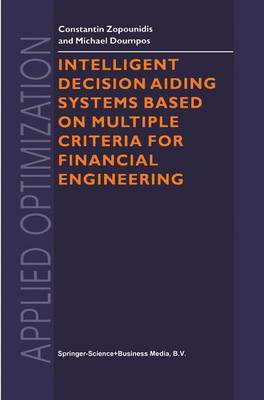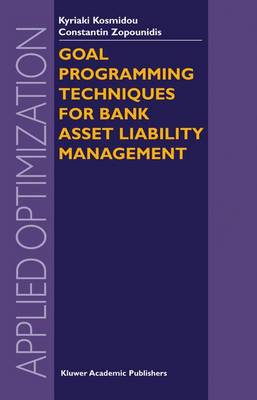Applied Optimization
4 primary works
Book 12
Multicriteria Decision Aid Methods for the Prediction of Business Failure
by Constantin Zopounidis and Dimitra Paraschou
Book 38
Intelligent Decision Aiding Systems Based on Multiple Criteria for Financial Engineering
by Constantin Zopounidis and Michael Doumpos
Audience: Researchers and professionals such as financial managers, financial engineers, investors, operations research specialists, computer scientists, management scientists and economists.
Book 73
Multicriteria Decision Aid Classification Methods
by Michael Doumpos and Constantin Zopounidis
Audience: Researchers and professionals working in management science, decision analysis, operations research, financial/banking analysis, economics, statistics, computer science, as well as graduate students in management science and operations research.
Book 90
Goal Programming Techniques for Bank Asset Liability Management
by Kyriaki Kosmidou and Constantin Zopounidis
Other publications that exist on this topic, are mainly focused on the general aspects and methodologies of the field and do not refer extensively to bank ALM. On the other hand the existing books on goal programming techniques do not involve the ALM problem and more specifically the bank ALM one. Therefore, there is a lack in the existing literature of a comprehensive text book that combines both the concepts of bank ALM and goal programming techniques and illustrates the contribution of goal programming techniques to bank ALM. This is the major contributing feature of this book and its distinguishing characteristic as opposed to the existing literature.
This volume would be suitable for academics and practitioners in operations research, management scientists, financial managers, bank managers, economists and risk analysts. The book can also be used as a textbook for graduate courses of asset liability management, financial risk management and banking risks.



